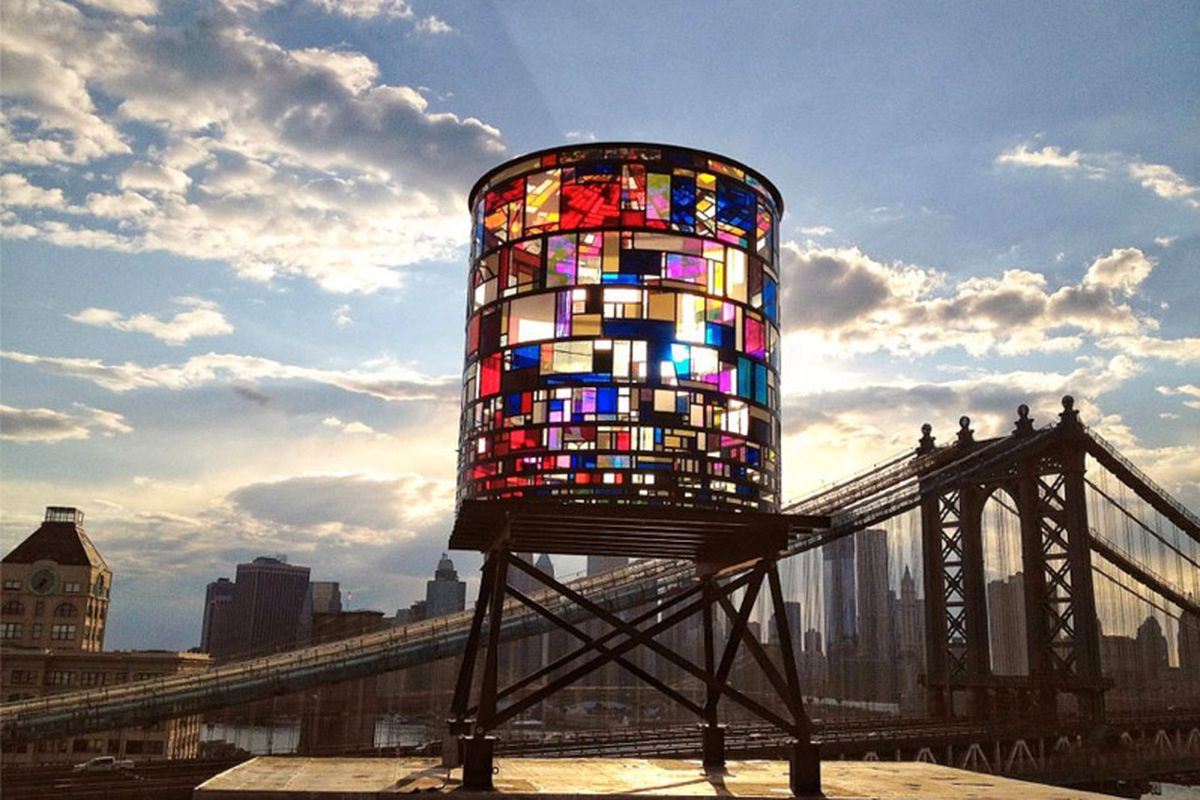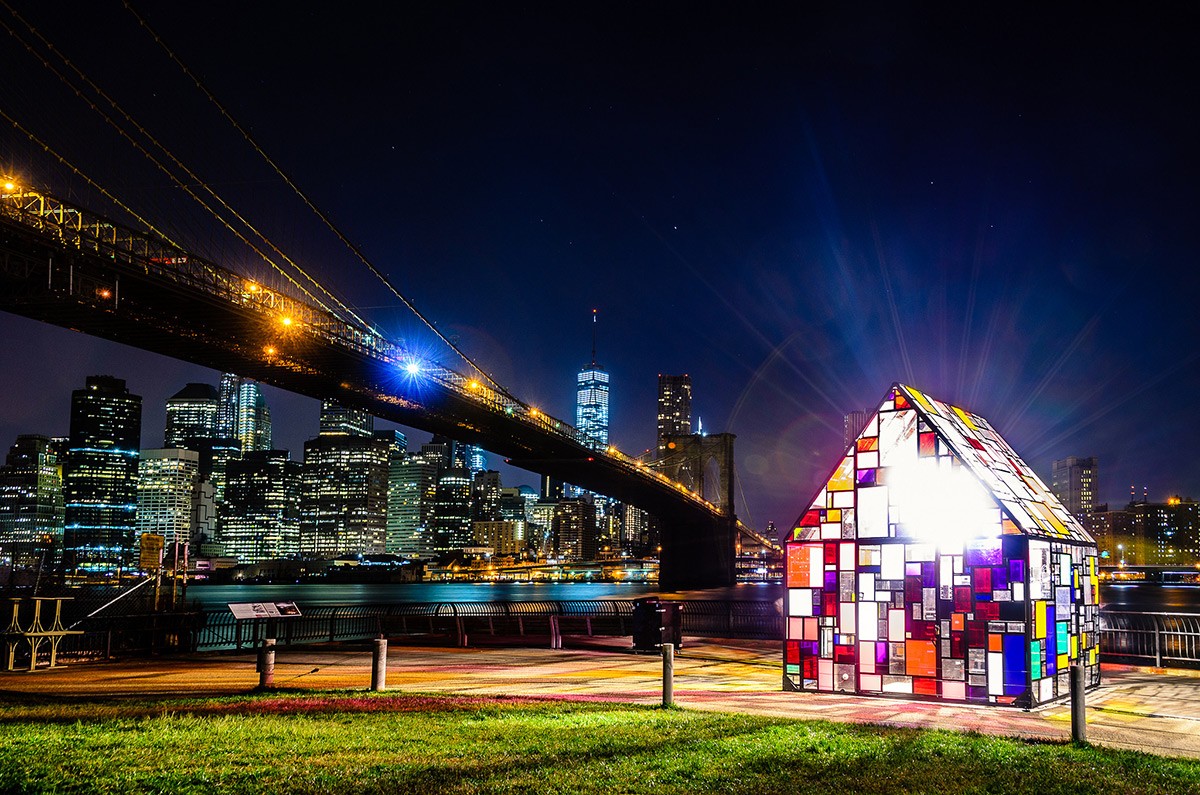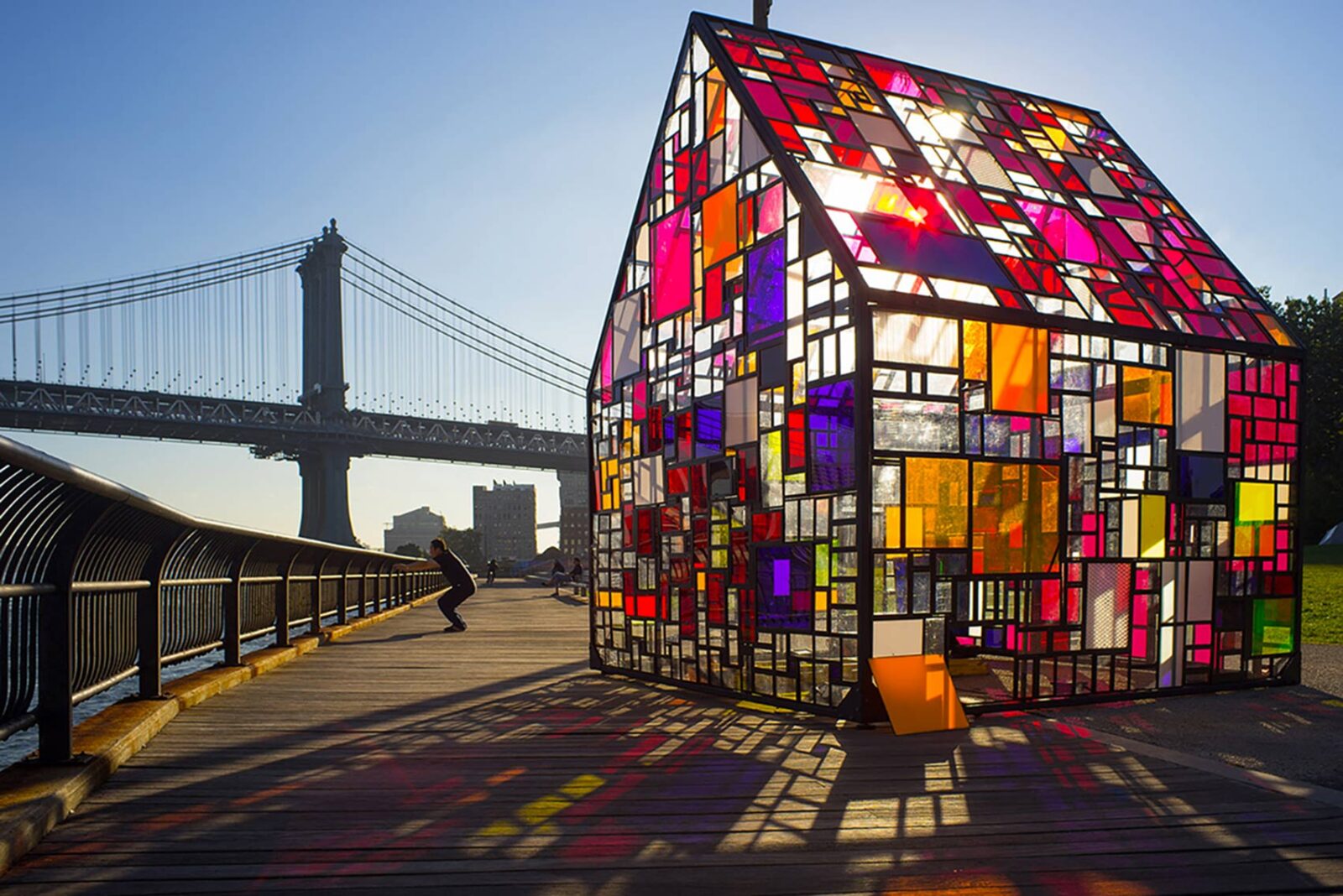Each day, thousands of people can witness Tom Fruin’s signature piece as they walk through the streets of Dumbo, cross the Brooklyn or Manhattan Bridges, or travel down FDR Drive. Fruin’s “Watertower” is a colorful sculpture of — you guessed it — a watertower, and sits atop the rooftop of 20 Jay Street. The massive piece is made of approximately 1,000 scraps of locally-sourced plexiglass, and includes interior and exterior access ladders and a fully-functioning roof hatch.
Born in Los Angeles in 1974, much of Fruin’s work is inspired by the Funk Art of the Sixties which moved away from minimalist designs and towards complex constructions made from “forgotten” elements. Fruin has spent much of his artistic career in Los Angeles, and currently works at his studio in Brooklyn.
Opposed to the formalism and minimalist arts of New York intellectuals, his irreverent creation is consolidating him as an outstanding figure in the international panorama of art.

15 years ago Mr. Fruin started to collect almost 3,000 drug bags from around the city (NYC). They were plastic or glassine, some clear, others solid-colored or patterned, and they ranged from pinkie-nail-size crack bags to credit-card-size marijuana packets. He sewed them together into a quilt that sold for $20,000.
These days, collectors are snapping up Mr. Fruin’s works faster than he can make them. His first solo show, at the Stefan Stux Gallery in Chelsea, sold out. Almost all of the 19 quilts in his second solo exhibit, ”Cultural Narcotics: The Straight Dope”, were already sold when the show opened. The buyers included the actor Willem Dafoe, who paid $30,000 for a piece.
Asked about the Dafoe purchase, Mr. Fruin looked abashed: ”I guess these things are sort of prestigious,” he said. ”But that’s not an indicator of success for me.”

Mr. Fruin had a graphic design career in mind when he moved to New York in 1996, after receiving a degree in studio art from the University of California at Santa Barbara. Instead, he spends his days bicycling around parks and housing projects, storing his findings in Ziploc bags and scribbling notes (”extreme corner light blue bags 5”) for later reference.
Over the years, random collecting revealed patterns: a cluster of colorful heroin bags had been opened the same way, presumably by the same user; bags from the same drug batches were decorated with dinosaurs, dollar signs or logos like ”Dirty Urine” and ”R.I.P.”

Fruin hangs his quilts from metal rods extending out from the wall, creating a stained-glass effect. ”For me it’s not so much about the imagery as what it actually is,” he said. ”The light going through completes it for me — it’s sort of an ephemeral, nonexistent residue of itself.”
Equal parts anthropology and art, Tom Fruin’s pieces are usually composed according to geography or chronology. One quilt maps out a housing project, with lighter bags representing buildings and darker ones the surrounding grassy areas. Another, replicating the American flag, contains baggies and documents — a scrap of a tax return, a name tag — found under the floorboards of an apartment in Manhattan’s meatpacking district.
Collecting bags is occasionally hazardous — Mr. Fruin has had boiling water and diapers thrown at him and has had run-ins with the police — and usually solitary. With little information about the bags’ origins, he spins his own tales. Finding bags with cocaine straws inside, he imagines a user tossing evidence out a window. Most bags are empty, but they sometimes contain seeds and on a rare occasion are filled with drugs (which hasn’t caused legal problems in galleries so far).
”I like to think that’s sort of a rich addict,” Tom said, laughing. ”Maybe they’re just doing it in the dark.”
 A close look at his latest work gives one a glimpse at a mature artist who has worked out a solid argument linked to a profound message of social criticism. On this occasion, Fruin, in his “Kolonihavehus”, offers us a sculptural staging that is the product of putting together a thousand pieces cast off by society and re-created to achieve a work of art.
A close look at his latest work gives one a glimpse at a mature artist who has worked out a solid argument linked to a profound message of social criticism. On this occasion, Fruin, in his “Kolonihavehus”, offers us a sculptural staging that is the product of putting together a thousand pieces cast off by society and re-created to achieve a work of art.
























